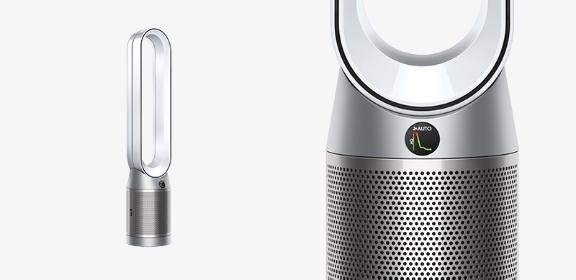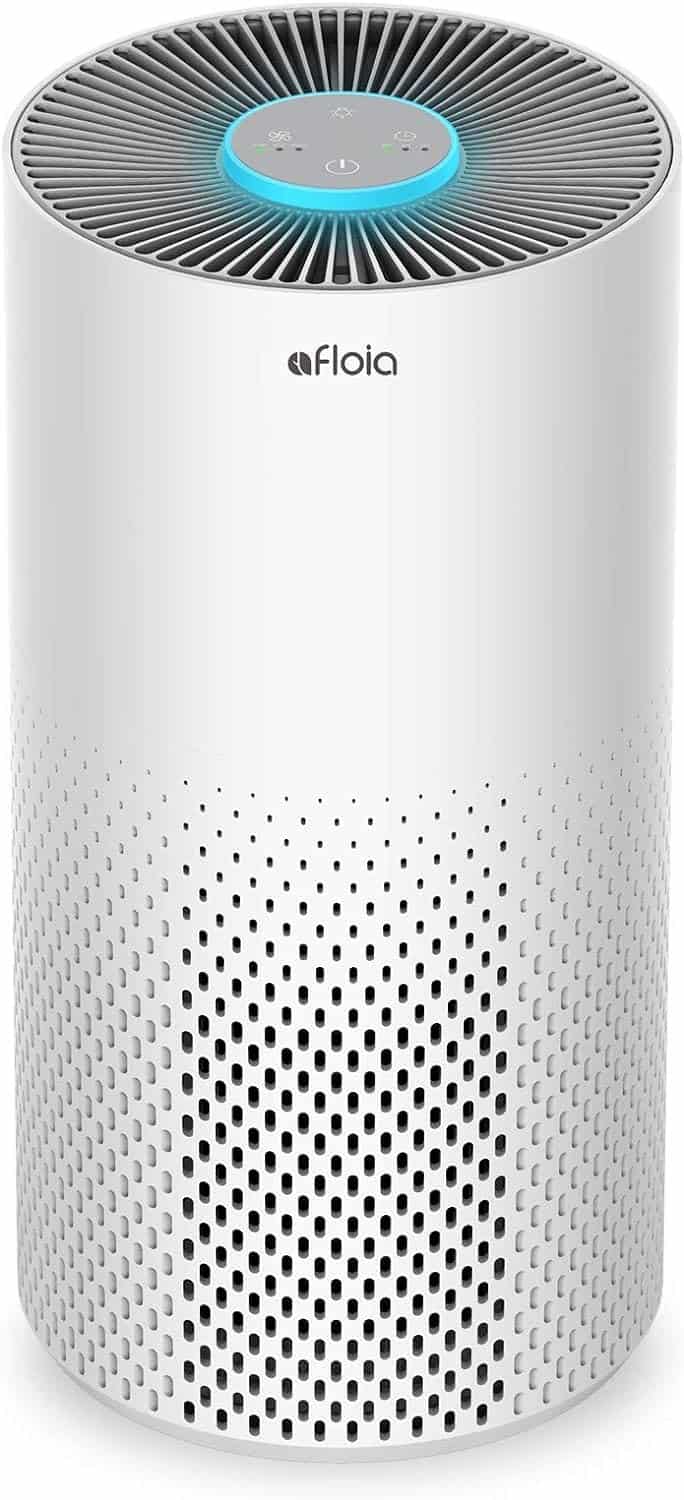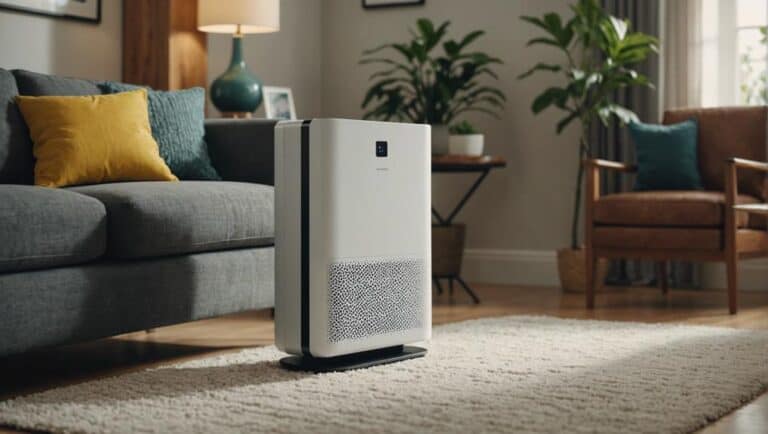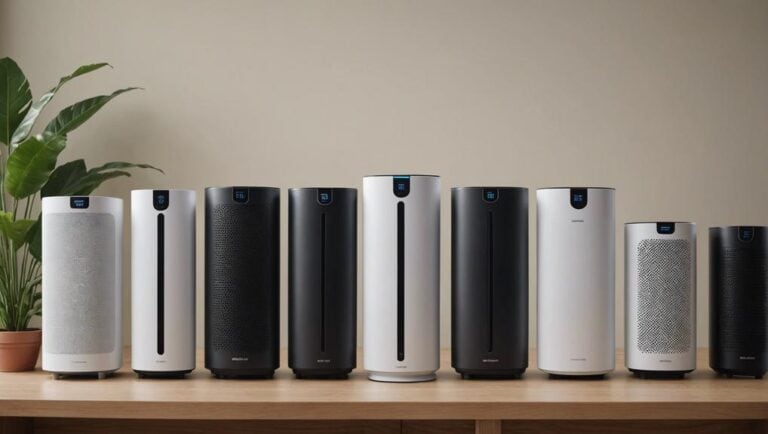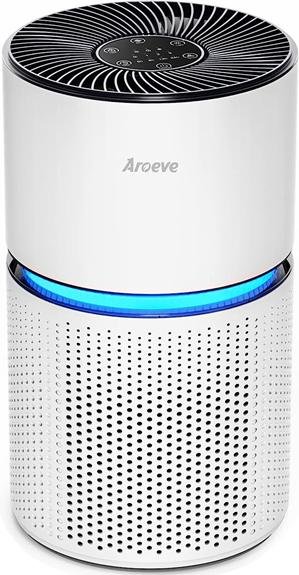The Great Debate: Air Purifier Operation – Windows Open or Closed?
In the quest for fresh and clean indoor air, there has been an ongoing debate among homeowners, environmental experts, and even health professionals about the most effective method of operating air purifiers. Does it work best with windows open or closed? This controversial topic has sparked a great deal of discussion and scrutiny, with strong arguments on both sides.
In this article, we dive deep into the intricacies of air purifier operation to explore whether opening our windows enhances the purification process or hinders its efficiency. So buckle up and get ready for some enlightening insights as we uncover The Great Debate: Air Purifier Operation – Windows Open or Closed?
The Benefits of Operating Air Purifiers with Windows Closed
- Improved Efficiency: Operating air purifiers with windows closed can significantly increase their efficiency in filtering out pollutants from indoor air. When windows are closed, there is minimal exchange of indoor and outdoor air, allowing the purifier to focus on cleaning the existing indoor air more effectively.
- Controlling Allergens and Pollutants: Closing windows while using an air purifier creates a barrier against allergens and pollutants from entering your living space. This is particularly beneficial for individuals with allergies or respiratory conditions as it helps minimize exposure to triggers such as pollen, dust mites, mold spores, and smoke particles.
- Noise Reduction: Keeping windows closed while running an air purifier also helps reduce noise pollution from outside sources like traffic or construction activities. By maintaining a sealed environment, you can enjoy a quieter atmosphere indoors, promoting better concentration and relaxation.
Additionally, operating an air purifier with windows closed promotes energy efficiency by preventing heated or cooled air from escaping the room unnecessarily. Overall, closing the windows optimizes the performance of an air purifier by maximizing its filtration capabilities while offering several health benefits for occupants inside the space.
The Advantages of Operating Air Purifiers with Windows Open
Air purifiers can be effectively operated with windows open, offering several advantages for indoor air quality.
- Increased fresh air intake: By opening windows while the air purifier is running, you allow a constant flow of fresh outdoor air to enter your space. This helps to dilute and remove pollutants that are present indoors.
- Enhanced pollutant removal: With windows open, an air purifier not only filters out indoor contaminants but also captures external pollutants such as pollen, dust, and other particles from entering your home or office.
- Improved ventilation: By opening windows alongside operating an air purifier system ensures better overall ventilation in your living or working environment, reducing stuffiness and promoting a healthier atmosphere.
Considering these advantages of operating air purifiers with windows open may help you make an informed decision about how best to optimize indoor airflow and enjoy cleaner, fresher environments all year round.
The Impact of Outdoor Air Quality on Air Purifier Efficiency
The quality of outdoor air significantly impacts the efficiency of air purifiers indoors.
- Higher levels of pollutants: When the outdoor air is polluted with higher levels of contaminants, such as smoke, dust, or smog, it becomes challenging for an air purifier to effectively clean the indoor air.
- Difficulties in achieving clean indoor air: With poor outdoor air quality, a significant volume of contaminated air enters the house every time doors or windows are opened. This can overload even the best-performing purifiers and hinder their ability to keep indoor spaces clean.
- Importance of maintaining good outdoor air quality: To ensure optimal performance and efficiency of an air purifier, it is crucial to take steps in improving outdoor air quality. This may involve limiting activities that generate pollution and monitoring local pollutant levels.
By understanding how outdoor air quality affects our indoor environment and taking necessary measures to improve it, we can maximize the effectiveness of an air purifier in keeping our living spaces healthy and fresh.
Understanding the Role of Ventilation in Air Purification
When it comes to air purification, understanding the role of ventilation is crucial. Ventilation refers to the process of circulating fresh air into an enclosed space while removing stale air. It plays a vital role in improving indoor air quality by reducing pollutants and increasing oxygen levels.
Importance of proper ventilation
Proper ventilation helps remove airborne pollutants that can accumulate indoors, such as dust, pet dander, mold spores, and volatile organic compounds (VOCs). By exchanging indoor air with outdoor air, it dilutes these contaminants and reduces their concentration levels.
Ventilation also aids in controlling humidity levels within a space. Excessive moisture can lead to mold growth and worsen allergy symptoms. By facilitating the evacuation of moist air and introducing fresh outdoor air, proper ventilation helps maintain healthy humidity levels.
Balancing open windows with filtration systems
While natural airflow from open windows can provide some level of ventilation, relying solely on this method may not be sufficient for effective purification. Opening windows can introduce external pollutants like pollen or smoke particles into your home.
To achieve optimal results, it’s advisable to integrate an air purifier with a filtration system into your indoor space. These devices capture impurities through filters that trap microscopic particles like allergens or bacteria before releasing clean air back into the room.
By striking a balance between opening windows for limited periods and using an efficient filtration system simultaneously, you ensure adequate ventilation while effectively purifying your indoor airspace.

Common Misconceptions about Air Purifier Operation
Misconception 1: Opening windows will reduce the effectiveness of an air purifier.
Opening windows does not render air purifiers ineffective. In fact, many models are designed to handle both outdoor and indoor pollutants efficiently. While fresh outdoor air might introduce some additional particles into the room, a high-quality air purifier can effectively filter out these contaminants.
Misconception 2: Air purifiers only remove dust and allergens.
Air purifiers are capable of capturing more than just dust and allergens. They can also eliminate smoke, pet dander, mold spores, volatile organic compounds (VOCs), and even viruses or bacteria present in the indoor environment. It is essential to choose an air purifier with a multi-stage filtration system that addresses multiple types of pollutants for optimal results.
Misconception 3: Air purifiers require constant maintenance.
Contrary to popular belief, most modern air purifiers do not demand constant upkeep. With regular filter replacements as per manufacturer instructions and occasional cleaning of external parts like grilles or pre-filters, an air purifier can function effectively without excessive maintenance requirements. Additionally, many models now come with indicator lights or reminders that notify when it’s time for filter replacement – making maintenance hassle-free for users.
The Science Behind Air Purification and Window Operation
Air purifiers are designed to remove pollutants such as dust, pollen, pet dander, and bacteria from the air. These devices use filters and/or electrostatic charges to trap particles as small as 0. 3 microns in size. By circulating the air through these filters, they can significantly improve indoor air quality.
Operating an air purifier with windows closed is generally more effective in removing airborne pollutants. This is because open windows allow outdoor contaminants like pollen or exhaust fumes to enter the room, making it harder for the purifier to clean the air thoroughly.
However, if there are specific odors or chemicals present indoors that need ventilation, opening a window temporarily while operating an air purifier can help accelerate their removal by allowing fresh air exchange. It’s important to note that this method may decrease overall purification effectiveness during that time period but may be necessary for addressing certain issues (e. g., cooking smells or paint fumes).
Factors to Consider When Deciding to Open or Close Windows with Air Purifiers
Air quality: It’s important to assess the current air quality in your area before deciding whether to open or close windows when operating an air purifier. If the outdoor air is heavily polluted, keeping windows closed will prevent contaminants from entering your home and allow the purifier to work more effectively. However, if the outside air is clean and fresh, opening windows can help bring in natural ventilation.
Allergies and sensitivities: Individuals with allergies or sensitivities may benefit from keeping windows closed while using an air purifier. Closing windows reduces exposure to pollen, dust mites, and other allergens that can trigger symptoms. On the other hand, those without specific respiratory concerns may choose to open windows occasionally for a change of indoor atmosphere.
Energy efficiency: Opening windows while running an air purifier can increase energy consumption as heat or coolness escapes depending on weather conditions outside; consider closing them during extreme temperatures. Investing in a well-insulated home can reduce fluctuations in temperature and save energy costs overall.
Practical Tips for Maximizing Air Purifier Effectiveness with Windows Open or Closed
Keep windows closed during high pollution periods
- When outdoor air quality is poor, keeping windows closed will prevent pollutants from entering your home and help the air purifier to effectively filter indoor air.
Use an air purifier with a strong filtration system
- Investing in an air purifier with a HEPA filter or activated carbon filter can capture smaller particles like allergens, dust, smoke, and odors more effectively.
- Make sure to regularly clean or replace filters as recommended by the manufacturer to maintain optimal performance.
Position the air purifier strategically
- Place the unit near potential sources of pollutants like entrances or windows.
- Ensure good airflow by avoiding blockages around the machine.
Balance fresh air intake whenever possible
- If you prefer fresh outdoor air despite any pollution concerns, consider using an air purifier that has a smart sensor feature which measures indoor pollutant levels and adjusts fan speed accordingly. This way, you can have both ventilation and purified indoor air at suitable times.

